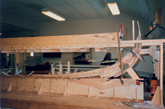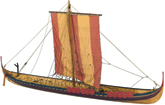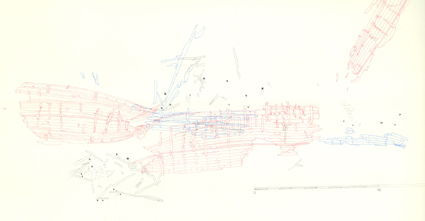From wreck to reality
During the excavation of Skuldelev 2, the location of the individual fragments were documented. Each fragment was then numbered before being recovered.
Drawings of the recovered fragments is reduced to a 1:10 scale and mounted on cardboard. The planks are joined by oins inserted through the nail holes. The original lines and form of the planks - and the hence of the ship - is recreated this way.
It takes several years to build a reconstruction model on the basis of the cardboard model. The missing parts of the keel were constructed from the pattern formed by the preserved parts of the actual keel. The upper part of the ship, along with the missing details such as oars, anchor, rigging and sail, were constructed using other archaeological finds, features of traditional clinker-built square-sailed vessels, experiences gained from previous reconstruction projects, and depictions and accounts from the Viking Age. At this stage in the process, the model is as close to the original ships when new, as we can come - and it forms a starting point for the full-size reconstruction.



